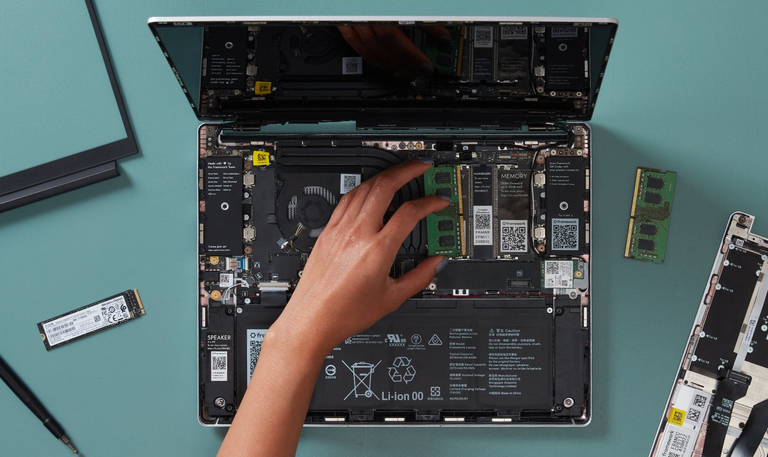[This post and its associated comments were originally published on Cohost.]
For various reasons I recently decided to get a new laptop. Rather than continuing my habit of buying Apple hardware, I bought it from Framework, a relatively new company whose “unique selling proposition” is building a laptop that is easily repairable, customizable, and upgradeable.
This is not a “recommendation blog” (no affiliate links here), but at least so far I’m pretty happy with the purchase. The laptop runs both Windows 11 (off the main drive) and Ubuntu 22.04 LTS (dual-booted from an expansion card); the Linux experience in particular is pretty good, with no hardware incompatibilities or other major glitches detected to date. (Well, I did have to customize the touchpad settings to make it work like I’m used to.)
But this post isn’t a product review—more a note about the wider implications of this thing I just bought.
First, there’s a “doing good” aspect to the purchase, one that Framework is quite happy to acknowledge in their marketing: Making products easier to repair and upgrade extends their lifetime and can help reduce electronic waste.
It also subtly changes buying patterns: traditionally I’ve been inclined to buy relatively high-end configurations for laptops, since I knew I wouldn’t be able to upgrade memory, disk, etc., after buying it. However in this case I chose a mid-range configuration because I knew that I could always upgrade the memory, storage, and even CPU later if I ever needed to. So the Framework approach also reduces wasteful spending as well.
But the main point I want to make is about everything it took to make a product like this come together and have everything work. With a Framework laptop this question comes to mind more than with (say) a MacBook Air, where Apple strives to present an integrated and seamless experience.
We can see and touch the material components of the Framework laptop, and explore how they are manufactured around the world, come together in a single place (in this case Taiwan) to be assembled together, and from there are shipped to customers in the US and elsewhere. This is the perspective people often take when they talk about “global trade” and “global supply chains.”
But there are other levels as well: First, the interface specifications by which you can plug component A into component B or substitute component C for component D, promulgated by a host of standards committees. Next the operating system software and applications, which for Linux in particular are produced with the participation of volunteers or quasi-volunteers (working on open source projects with the blessing of their employers) and (often) with the support of and governance by nonprofit organizations. Then the dense web of legal contracts and financial arrangements that enable component producer X to be a supplier to manufacturer Y and to be reasonably sure they’ll be compensated for it. And, finally, the governments that enforce the contracts, backstop the financial system, and provide laws and regulations under which trade proceeds, and their militaries (principally that of the US) that keep malicious actors from disrupting the shipping lanes and airways of global commerce.
All of these systems are interdependent, mutually reinforcing, and mostly invisible to the people like me who order a laptop online one day and wake up to find it on my doorstop a few days later. This “world machine” is not without its flaws, and many the unfortunate or unwary person has been crushed between its gears. (I’ll have more to say about this in future posts.) But for better or worse it underpins the world we live in, it is the machine that (to varying degrees) supports and sustains us.
beneficence (@bubblingbeebles) - 2022-12-06 13:35
i also got one of these recently! i appreciate your thoughts.
Frank Hecker (@hecker) - 2022-12-06 22:48
You’re welcome!
